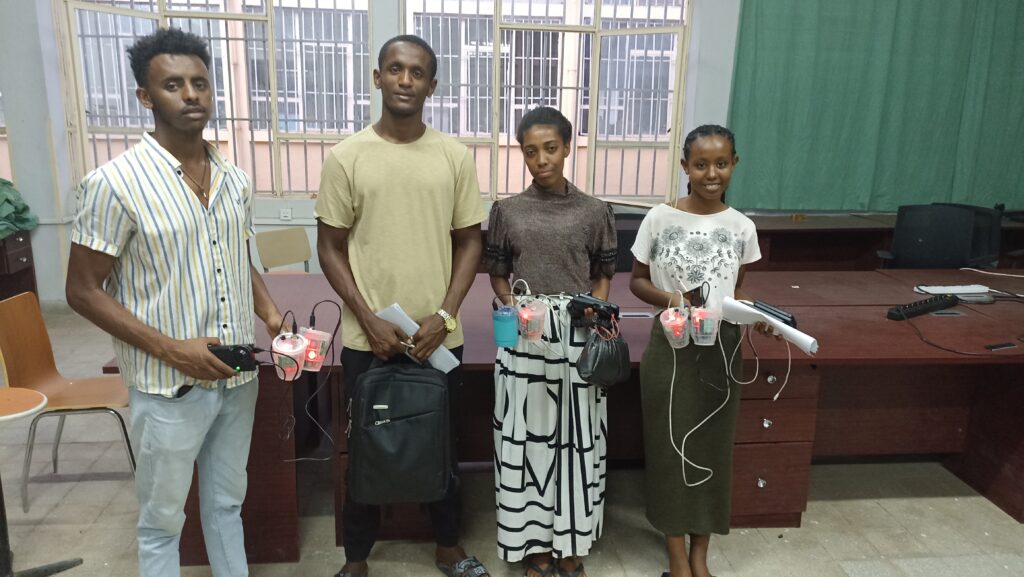Together with colleagues from various departments, I have created a proposal for establishing a low-cost measurement network with low-cost sensors and student science.
Over the past five years I have developed and tested a low-cost PM2.5 sensor system. I have used multiple courses to conduct research with students. Presumably, those two combined could result in a low-cost measurement network: sensor systems built and maintained by students, and data collected, validated, analyzed and interpreted by students as well. For this, I have joined hands with two colleagues from Environmental Health (Asmare Asrat and Awugchew Teshome), Geography and Environmental Sciences (Alemu Assele), Electrical and Computer Engineering (Afework Tademe), Meteorology and Hydrology (Israel Gebresilassie) and Water Supply and Environmental Engineering (Dagmawi Mateos and me). As staff, we will offer courses within our respective departments for which part of the content can be used to conduct tasks for the measurement network. For example, students of Electrical and Computer Engineering covering part of the course Microcomputer and interface by building the sensor systems. Or, Geography students covering part of a GIS course by spatially visualizing measurement network data.
The proposal is submitted as a thematic research to the Water Resources Research Center, and accepted on April 29 2024. Since budget is limited, we have submitted this proposal with a zero-budget: materials will be covered by my lab, while all labor will be done either by the students, or the staff offering those courses and supervising the students. Over the coming year we will find out whether the assumption (running a measurement network low-cost with low-cost sensors and student science is possible) is true or not.
See the presentation slides used during the proposal defense:



















